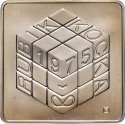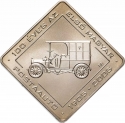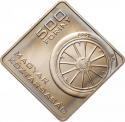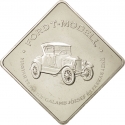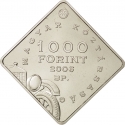You are about to finish your registration. Please check your mailbox (including spam folder). There should be a letter with a confirmation link. Check setting to make sure that your e-mail address is correct.
Send letter againDescription
Johann Wolfgang Ritter von Kempelen de Pázmánd (Hungarian: Kempelen Farkas; 1734–1804) was a Hungarian inventor and writer renowned for his chess-playing "automaton" deception, famously known as The Turk, as well as his speaking machine.
Engraver: Áron Bohus
Obverse

|
Depicts the Mechanical Turk figure with a chessboard, dividing the invention year and surrounded by the inscription "Farkas Kempelen's chess machine". KEMPELEN FARKAS SAKKAUTOMATÁJA |
|---|---|
Reverse

|
Depicts in horizontal rows beneath each other, the country name, the denomination, the year of issue, alongside the mint mark, and at the bottom, the engraver's privy mark. Along the edge defined by the line, both at the bottom and top, referencing a chessboard, the letters "ABCDEFGH," while on the left and right sides, the numbers "12345678" are visible. A B C D E F G H |
| Edge |
500 Forint
Third Republic
Hungarian Explorers and Their Inventions
Mechanical Turk by Wolfgang von Kempelen
Subscribe series
KM# 764 Adamo# EM181
Hungarian Explorers and Their Inventions
Mechanical Turk by Wolfgang von Kempelen
Characteristics
| Type | Commemorative Issue (Non-circulating) |
| Material | Copper Nickel |
| Weight | 14 g |
| Diameter | - |
| Width | 28 mm |
| Height | 28 mm |
| Thickness | 2.1 mm |
| Shape |
|
| Alignment | Medal |
| Mint |
Budapest Mint (BP)
|
Related coins
Hungarian Explorers and Their Inventions
Hungarian Explorers and Their Inventions


